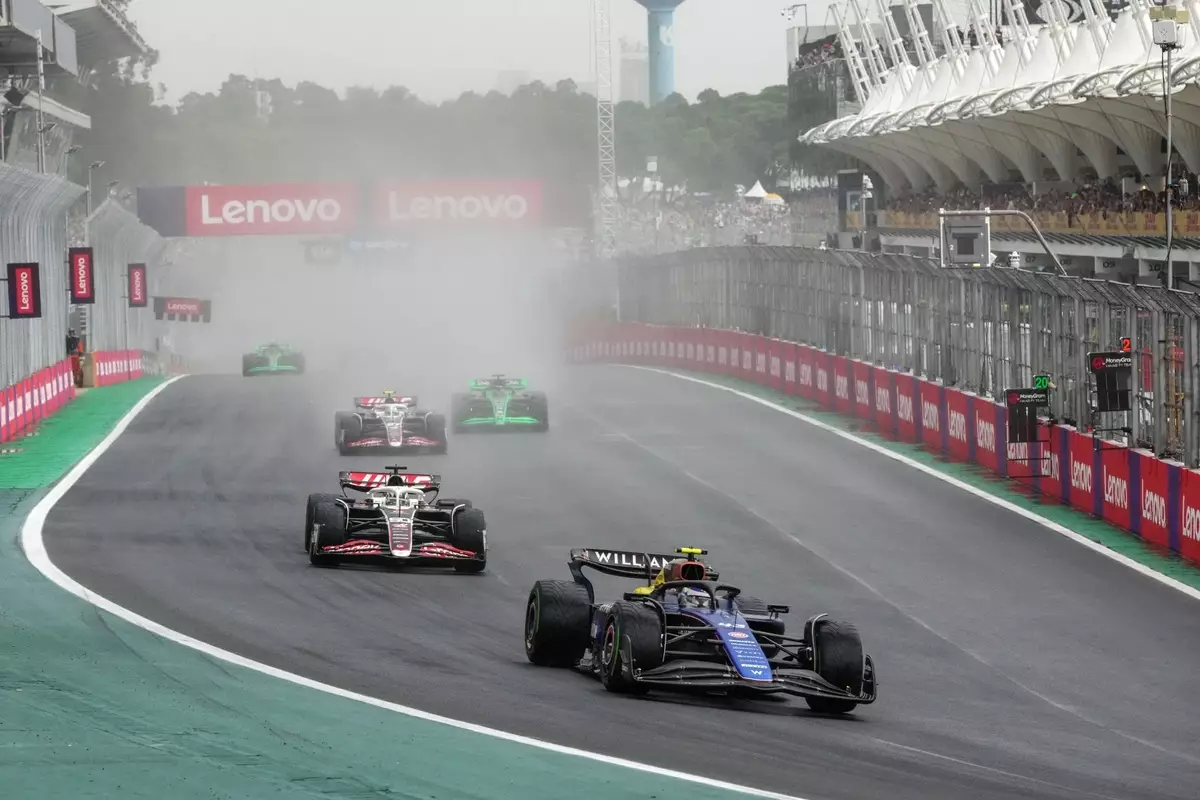Formula 1 has long been a battleground for the most skilled and talented drivers in the world. The 2023 Brazilian Grand Prix offered a unique challenge that magnified the gap between seasoned veterans and inexperienced newcomers: inclement weather conditions. As rain poured down and the track turned treacherous, the performance of younger drivers quickly became a focal point. Observing their struggles provides not only insight into their capabilities but also highlights the steep learning curve that the sport demands.
The Brazilian GP brought with it a challenging repertoire of near-aquaplaning conditions that tested the resolve of all drivers on the grid. For those with minimal experience—specifically those with under ten race starts—the daunting task of navigating wet tracks was magnified. Among them, Liam Lawson stood out as the only driver with prior wet racing experience. This came during his debut at the 2023 Dutch GP, where he encountered struggles that would serve as a harsh prelude to the conditions in Brazil.
Qualifying proved to be a tumultuous affair for many. Several drivers faced mishaps, with both Williams and Aston Martin members crashing in various sections. Notably, Carlos Sainz faced an unexpected exit at the notorious Senna S corner. The fierceness of the conditions was evident as several aspiring drivers, including Franco Colapinto and Oliver Bearman, found themselves unable to progress beyond Q1. In stark contrast, Lawson displayed remarkable tenacity, finishing fifth on the grid despite the perilous conditions.
The race itself turned into a tightly wound narrative of challenges and revelations. Bearman, who had stepped in for Kevin Magnussen, became embroiled in numerous mishaps, including a penalty following a collision with Colapinto on lap four. Later in the race, he was involved in another incident after a spin while pursuing Sainz. Colapinto’s fate was sealed during safety car conditions, succumbing to the clutches of worsening rain and resulting in retirement from the race. Lawson, too, faced misfortune when he was spun out by Oscar Piastri on lap 26.
The imposition of rain transformed the race from a contest of speed to one of survival. Colapinto’s reflections on the race echoed the sentiments of many drivers; he described the track as “undriveable” at times, noting how the challenges rendered them „like passengers“ in their own vehicles. Lawson, who managed to maintain a fairly stable performance, admitted he faced moments where he nearly met the same fate as his peers, revealing the precarious nature of high-speed racing in wet conditions.
In facing the unique trials of wet racing, Bearman demonstrated an acute awareness of his shortcomings. Recognizing that laps spent on the track held immense educational value, he accepted that his performance fell below expectations. The young Haas driver reflected candidly on the necessity of staying on track to make progress, acknowledging a failure to do so and describing it as a crucial opportunity for growth; he stated, “Doing a race in the wet is very rare in F1, so making the most of all of them is a great experience.”
The challenges Bearman faced highlighted a lack of predictability that hampered his ability to gauge high-speed corners. His experience was compounded by his vehicle’s characteristics and the inherent difficulties posed by the VF-24 in wet conditions. Haas team principal Ayao Komatsu recognized the root of Bearman’s errors as not solely his inexperience but also the driving dynamics of their car. Yet, he remained optimistic about the potential of the young driver, emphasizing the importance of patience and the need for consistent performance over time.
A Broader Perspective: Realizing the Path to Mastery
The Brazilian GP served as a crucible for the new entrants into the F1 world, illuminating the challenges distinctly faced by rookie drivers. It is essential to maintain perspective when evaluating their performances. Indeed, the last pilot to clinch a podium finish in the rain as a rookie was Sebastian Vettel in the 2008 Italian GP. The context is invaluable: it takes time to cultivate the intricate skill set necessary for success in Formula 1.
As conditions evolve, so too do the drivers, and experiences such as these are fundamental to their development. Understanding that each race carries lessons, these young competitors will learn to navigate more than just the complexity of the circuits; they will grapple with psychological resilience, decision-making in crisis, and ultimately, their identity as rising stars in the sport of Formula 1. The lessons learned in the rain may take time to manifest, but they lay the groundwork for future triumphs, both on and off the track.


Napsat komentář